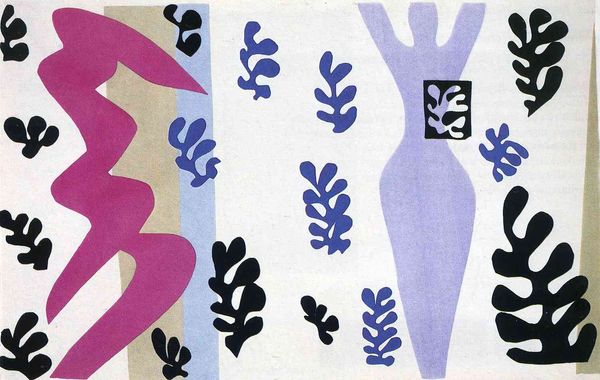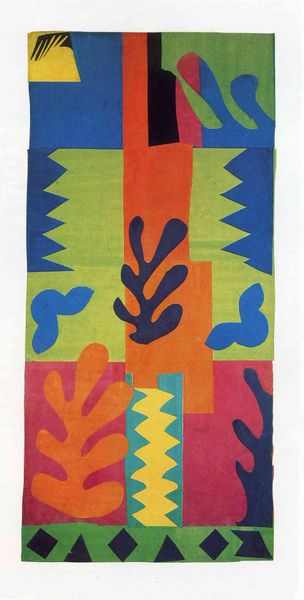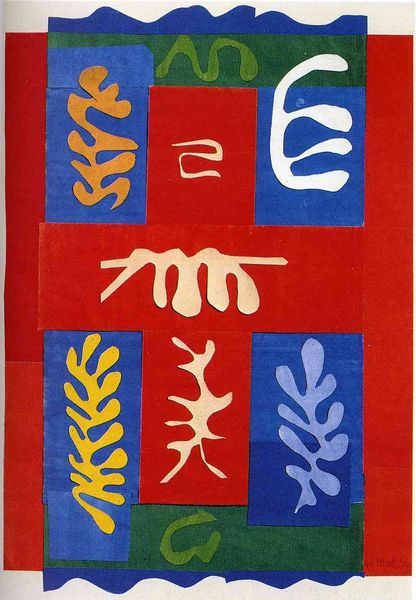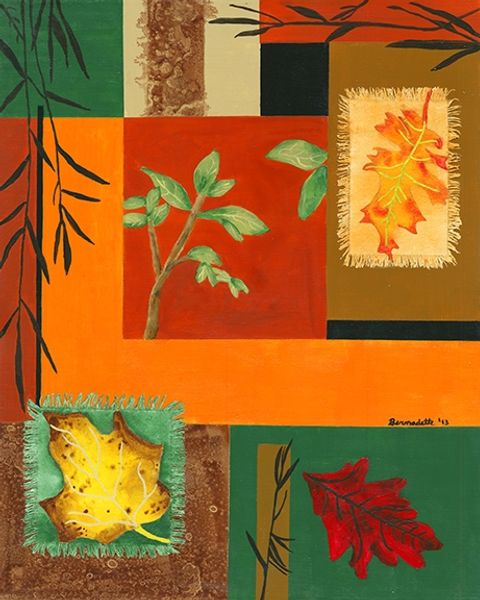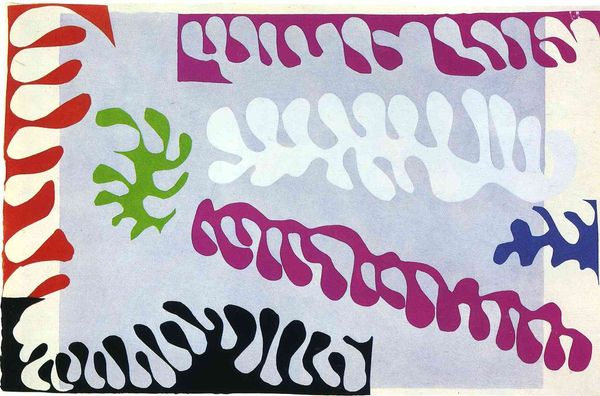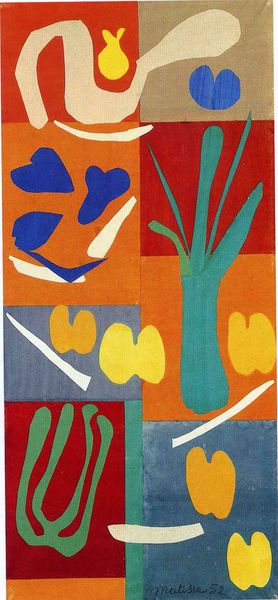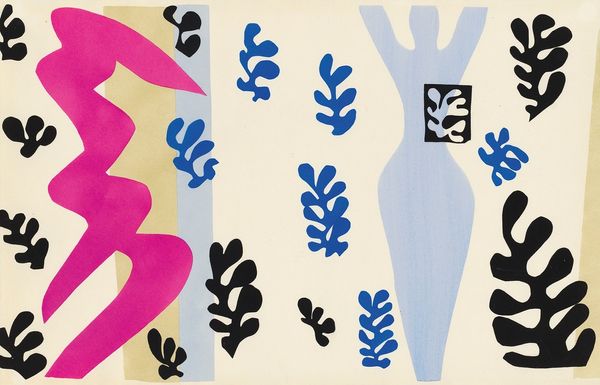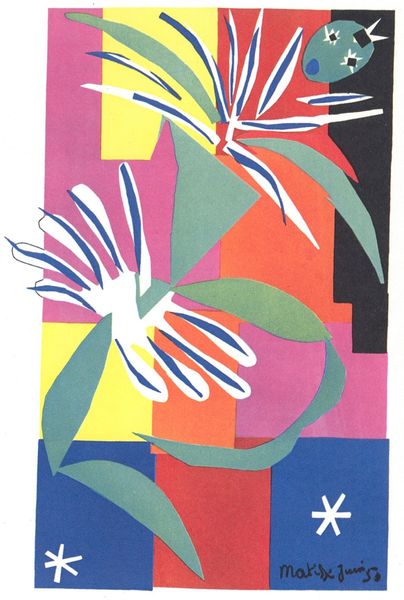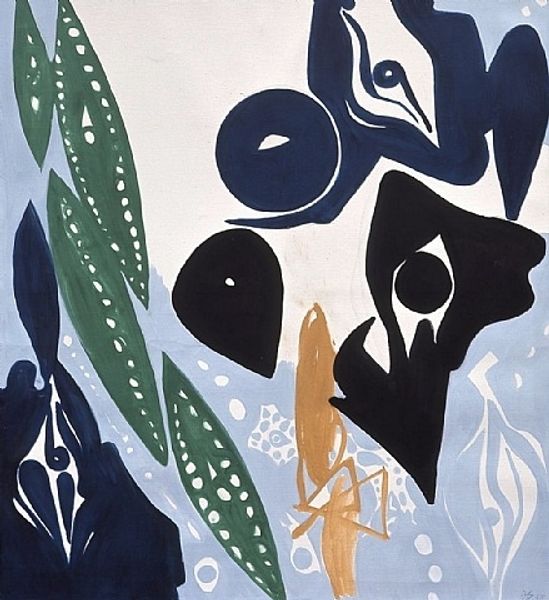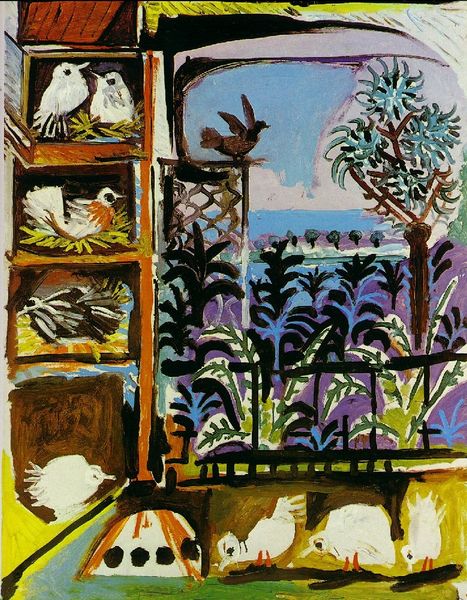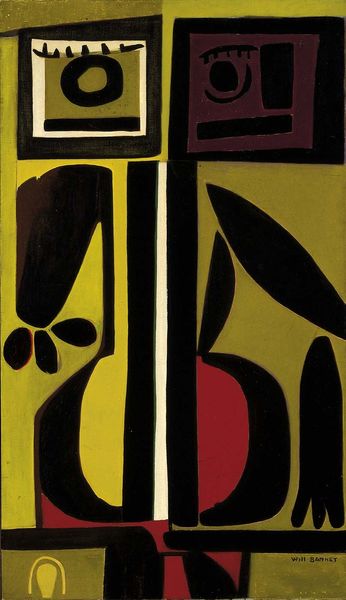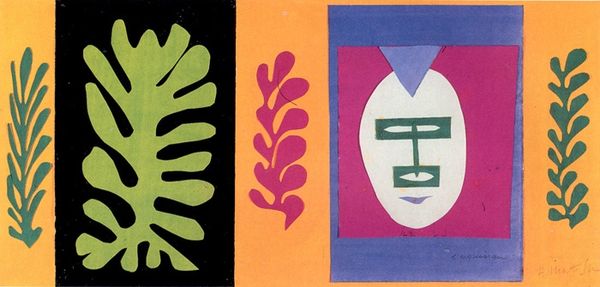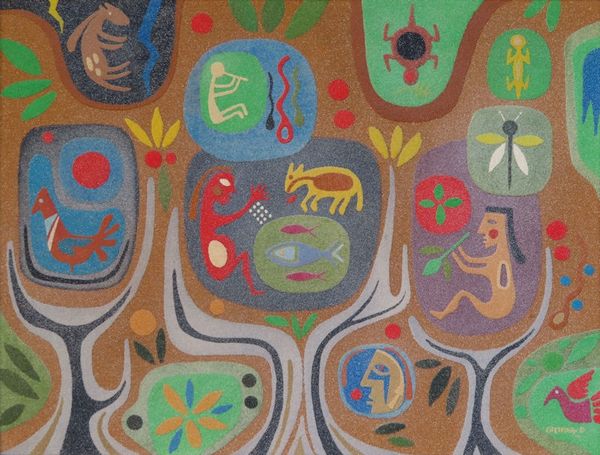
#
pattern heavy
#
pop art-esque
#
popart
#
pop art
#
animal print
#
tile art
#
pop art-influence
#
pattern repetition
#
layered pattern
#
funky pattern
Copyright: Henri Matisse,Fair Use
Curator: This is Henri Matisse’s “Anfitrite,” crafted in 1947. The medium is paper collage on canvas. Editor: It's strikingly joyful. The color relationships—primary and secondary tones in flat blocks—create an almost playful composition. Curator: The cut-out paper technique here reflects Matisse's innovative approach later in life. Crippled by surgery, he moved from painting to "painting with scissors," as he called it, creating works full of simple yet vibrant forms. Editor: Tell me, why “Anfitrite”? She seems to be the ancient Greek sea goddess; so why not directly reference mythology with figures of Gods rather than abstractions that leave the subject to mere suggestion? Curator: This comes just after the Second World War, we begin to see many artists looking to explore form and color relationships in non-representational terms after living through intense socio-political polarization of representational ideologies. Abstraction was a way to embrace non-ideological means for creative experimentation. Editor: Indeed. Note the recurrence of leaf-like shapes and undulating forms, reminiscent of seaweed and marine life. There’s an inherent tension between the grid structure of the background and the organic silhouettes pasted on top, creating an exciting visual dialogue. I feel it evokes a harmonious yet surreal vision of the ocean. Curator: You speak of dialogue! How crucial the institutional context and history is here. Before 1947, collage may have had lesser recognition as “fine art.” The recognition of works such as "Anfitrite" certainly influenced what we can and cannot show in major institutional art collections today. Editor: Certainly, but it is precisely the interplay of line and shape, positive and negative space, that generates a sophisticated visual dynamism! Now that you point that out about context, that does bring so much into the understanding, doesn't it? Curator: Yes, thinking about that institutional dialogue surrounding the reception of art brings an important element to appreciating the many cultural contexts through which Matisse's collage now circulates. Editor: For me, this piece epitomizes how color alone can trigger immediate emotional responses in us.
Comments
No comments
Be the first to comment and join the conversation on the ultimate creative platform.
